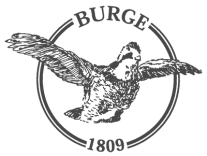At war’s end some of those who had served at Burge as slave laborers returned as freedmen. Reconstruction times were no easier economically than wartime had been, but Dolly was able to assemble adequate labor to maintain the farm and continue an active life at Burge.
In 1866, after eight years of widowhood, Dolly married the Reverend William J. Parks, a longtime family friend and a charter member of the Board of Trustees of Emory College. She moved to his home in Oxford, Georgia, while retaining management of the farm. In 1873 William Parks died and Dolly returned with her daughter Sadai to live at Burge.
Two years later, Sadai Burge married the Reverend John Davis Gray, a Methodist minister. In 1887 John Gray died, leaving Sadai a widow with five children. Three years later Dolly died at Burge at the age of 74, leaving the property to her daughter. Scarcely a year later, in 1892, Sadai died, leaving five orphaned children, the oldest of whom was fifteen.
The fact that the property was not sold out of the family at this time was remarkable. The children had no money, and went to live temporarily with the Graves family, who served as guardians, at nearby Mt. Pleasant Plantation. (The Mt. Pleasant house still stands near the junction of U.S. highway 278 and Georgia 11.) Sale of Burge was considered in order to support the children, but instead two of the girls went to live in Chicago with Miss Cornelia Lunt, daughter of Dolly’s brother Orrington Lunt, and both boys and the third girl went to live with Lunt relatives in California.
With no family members resident in the area to manage or oversee the farm, Burge in the 1890’s became a tenant farming operation with as many as twelve tenant families living on various parts of the farm. Total management and guardianship for some 25 years fell to a remarkable black couple, George and Sidney Gunn, who had been an important part of the administration of the farm since the time of William Park’s death. Sidney was cook and housekeeper and George supervised all the business of the farm, collecting rents, marketing crops, paying bills, and managing the tenant farming operation. The Gunns lived in the family house until their deaths in the 1920’s. Both are buried in the Burge Historic Graveyard in the middle of the farm. Much of the farm today is divided into relatively small fields, a legacy of these tenant farming days.



